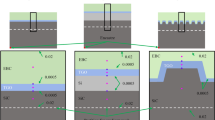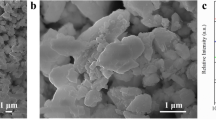Abstract
The effect of temperature cycling on the creep behaviour of Nickel 201 and Inconel 600 in combustion gas has been studied. Specimens were tested both at constant temperature, 900° C, and at 900° C interrupted by temperarature drops down to ∼510° C. The creep straining has been analysed with respect to a weighted time parameter which includes the creep contribution during the lower temperatures of each cycle. With respect to this compensated time parameter, the temperature variations were generally observed to result in a strong acceleration in creep. The effect seemed to increase with increasing frequency of temperature drops, increasing grain size and decreasing stress. Thus, at low stress levels, large-grained specimens of both alloys experienced an acceleration even inabsolute creep rate upon cycling. The grain size dependency indicates that the destructive effect of the cycles is caused by crack formation. Surface cracking associated with grain boundary oxidation seemed to be the dominant cracking mode. It is suggested that, during creep in oxidizing environments, repeated periods of cooling might strongly accelerate the growth of surface creep cracks due to the difference in thermal expansion between metals and oxides. This difference causes high tensile stresses to arise in the metal in front of the grain boundary oxides, and the stresses are assumed to be high enough to nucleate microcracks along the boundary.
Similar content being viewed by others
References
J. K. Solberg andH. Thon,Met. Trans. 14A (1983) 1213.
J. E. Dorn,J. Mech. Phys. Soc. 3 (1954) 85.
K. Monma, H. Suto andH. Oikawa,J. Jpn. Inst. Metals 28 (1964) 188.
H. Wiggin & Co. Ltd., “Physical and Mechanical Properties of Nimonic Alloys”, Publication 3270 (Hereford, 1967).
Martin Marietta Corp., “MAR-M Alloy 246” (Martin Metals Division, 1969).
G. R. Brophy andD. E. Furman,Trans. ASM 30 (1942) 1115.
H. Wiggin & Co. Ltd., “Nickel 200 and 201”, Publication 3570 A (Hereford, 1972).
G. V. Samsonov (ed.), “The Oxide Handbook”, translated by C. N. Turton and T. I. Turton (Plenum, New York, 1973) p. 126.
H. Wiggin & Co. Ltd., “Inconel Alloy 600”, Publication 3269 (Hereford, 1971).
B. F. Dyson andM. J. Rodgers,J. Mater. Sci. 8 (1974) 261.
V. Vytek,Acta Metall. 26 (1978) 1345.
W. Beere andM. V. Speight,Met. Sci. 12 (1978) 593.
M. V. Speight, W. Beere andG. Roberts,Mater. Sci. Eng. 36 (1978) 155.
J. Gittus, “Creep, Viscoelasticity and Creep Fracture in Solids” (Applied Science Publishers Ltd., London, 1975) pp. 574 and 588–589.
R. Pilkington, D. A. Miller andD. Worswick, in “Creep in Structures”, IUTAM Symposium, Leicester, UK, 1980, edited by A. R. S. Ponter and D. R. Hayhurst (Springer, Berlin, 1981) pp. 525–541.
R. Pech andJ. Sedlacek, in “Symposium on The Physical-Metallurgical Problems and Problems Concerning Applied Mechanics in Manufacture of Large-Capacity Turbosets”, Prague, 7–9 September 1967, ([Hrsg.:] Vydala práce pro o.p. Škoda plzeň, 1970) Vol. I, p. 138.
Author information
Authors and Affiliations
Rights and permissions
About this article
Cite this article
Solberg, J.K., Thon, H. The influence of temperature cycling on the creep properties of Nickel 201 and Inconel 600 in combustion gas. J Mater Sci 19, 3908–3924 (1984). https://doi.org/10.1007/BF00980754
Received:
Accepted:
Issue Date:
DOI: https://doi.org/10.1007/BF00980754




